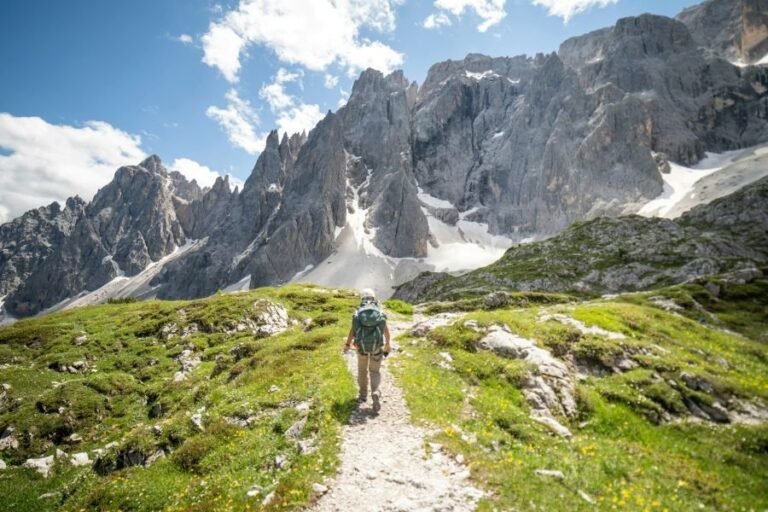1. Northern Italy: The Dolomites and Alpine Regions
Northern Italy has notoriously cooler temperatures. The Dolomites are a particularly fascinating region; you’ve probably heard of their “ pink phenomenon” and slick ski-to-hiking transition each year. However, it’s also the most important region of Italy to pay attention to the hiking seasons. When it’s inaccessible, it is really inaccessible.
These alpine regions are strictly suited to the late June to early September window, nobody wants late snowfall sabotaging trail accessibility.
With that said, it does depend on where you’re going. High altitude areas like Sella and Pale di San Martino might have lingering snow and ice that lasts well into July. Always check destination-specific conditions, and be mindful of weather fluctuations in shoulder seasons.
2. Central Italy: Tuscany and Umbria
Take a sigh of relief. Central Italy is fortunately milder, and while temperatures can drop to a chillier 35.6°F in cities like Florence, hiking trails remain accessible. Instead, it’s a question of comfort. Dodge wintry temperatures but also avoid hiking in the mid-summer heat (nobody wants heat stroke).
Pick April to June or September to October; spring and fall are the ideal shoulder seasons, with moderate temperatures and quieter trails. As an extra bonus? Tuscany and Umbria have their harvest season in the fall. You’ll be hiking past plump-looking grape and olive groves, with plenty of stops available for tastings.
3. Southern Italy: Amalfi Coast and Sicily
Southern Italy is the hottest of the lot, so take that previous advice and times it by ten. Always avoid hiking in peak summer on the Amalfi Coast and in Sicily. Temperatures can reach a shocking 100°F, and even worse the crowds get so thick that you likely won’t enjoy the trail. It’s not enjoyable, and while it’s worth a summery jaunt to a single viewpoint, it’s just not conducive to a hiking based trip.
Instead, stick to March and May or September to November. Spring has the bonus of blooming flowers, while fall has the possibility of foliage and harvest produce.
As you can tell, the “best” time to go hiking in Italy depends heavily on which region you choose. When will you be planning a visit?



